I enjoy using molecular model kits and have reviewed five of the current major makers and presented articles on the enduring appeal and value of physical molecular models in a predominant age of software. Molecules in the news and those of social interest particularly intrigue me and where possible try to combine with an interest in collecting narrow thematics in philately. The brief presentation below looks at the well known alcoholic drink absinthe with a reference to how recent research has shown the true nature of its effects.
Absinthe has an extensive social history—its famous users especially in the Bohemian Paris set of the 19th and early 20th century, the rituals involving its preparation / use and more recently studies of its claimed effects and what they may be caused by. Wikipedia has a well illustrated and detailed history. Snippets presented below are either sourced from there or the excellent book 'Murder, Magic and Medicine' by John Mann (pub. 1994, OUP).
Absinthe is a spirit prepared by steeping various plant sourced ingredients in an alcoholic solution and then distilling / diluting giving a green liquid (hence its nickname la fée verte—'the green fairy'). A key ingredient is a wormwood—typically Artemesia absinthium and believed to be the source of its alleged psychoactive effects, thujone. By Nature's standards thujone is a very simple molecule (in later articles I hope to show some very complex alkaloids with a social impact which were rusty brain stretchers to construct in models). It is highly strained with both a five and three membered carbon ring.
The Wikipedia Thujone entry references the modern analyses of both current and period samples of absinthe. It cites an open access paper entitled Absinthism - a fictitious 19th century syndrome with present impact by Lachenmeier et al, which is an excellent and accessible report of their findings. They conclude that the thujone concentrations are too low to have a psychoactive effect. There are other less studied ingredients but it is argued by writers that the very strong alcohol content of the drink is largely responsible for its effects (and likely 'absinthism'). Typically up to 74% alcohol by volume (approx. double that if stated in terms of 'proof'). Also see Absinth myths finally laid to rest in Chemical and Engineering News 2008.

Thujone. Skeletal formula with ball and stick model created using the open software MolView by Herman Bergwerf. This is an online viewer within a web page and find it one of the most convenient to use. It can access a wide range of chemicals from online open source databases. Molecular modeling software needs to be used with care, they can present simple molecules such as these correctly but can be misleadingly incorrect with the correct conformation of complex molecules if this data has not been embedded into the file.
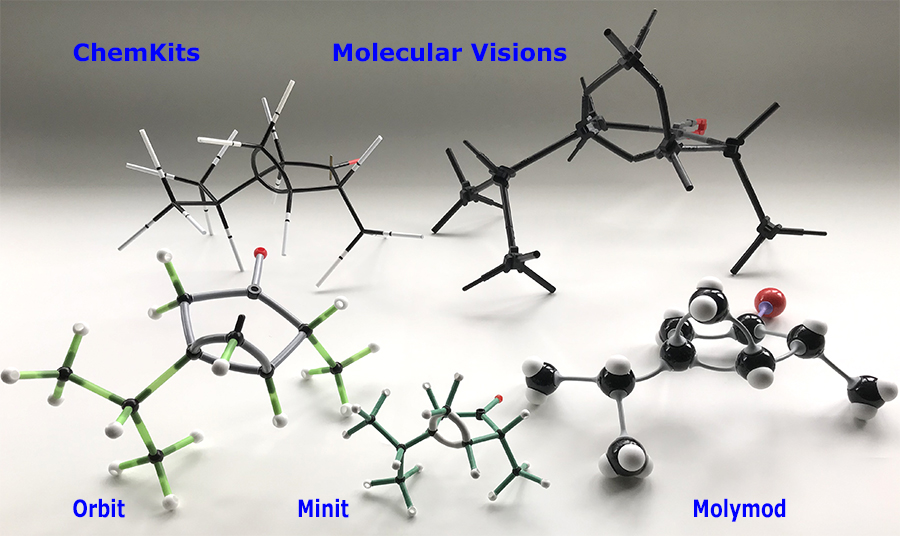
Thujone presented using five of the current molecular model kits which are available. Some of these kits are less suited to represent the highly strained three carbon membered ring. Although Molecular Visions uses long bonds they are not flexible and partly snap at the join as shown. The part space filling atoms of the Molymod kit make it unsuitable to use the short bonds but is successful using the long flexible bonds included. Orbit and Minit include more flexible tubing and the ChemKits standard bonds are flexible enough to cope with the strained ring.
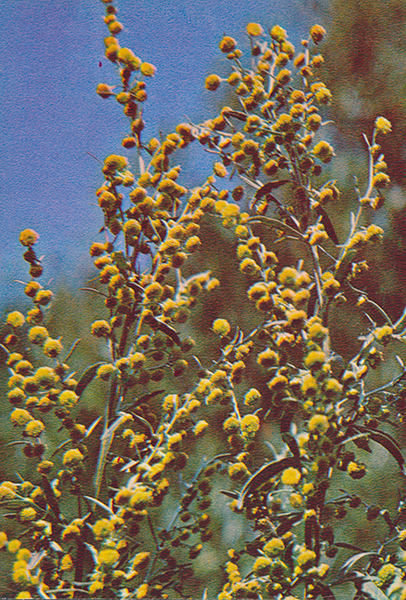
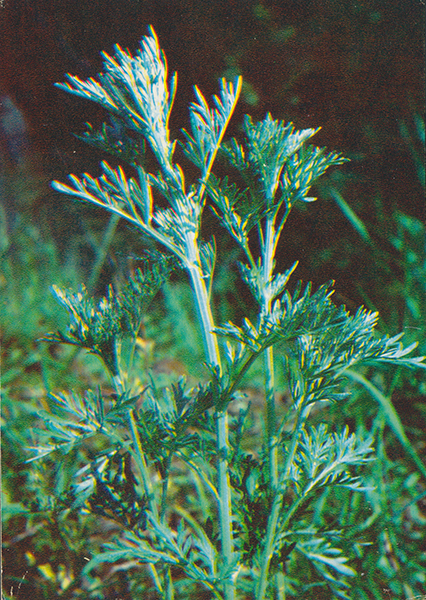
Two Russian postcards showing the wormwood plant which is in the daisy family. These are intended as collectibles as present information on the back rather than to be used for posting.
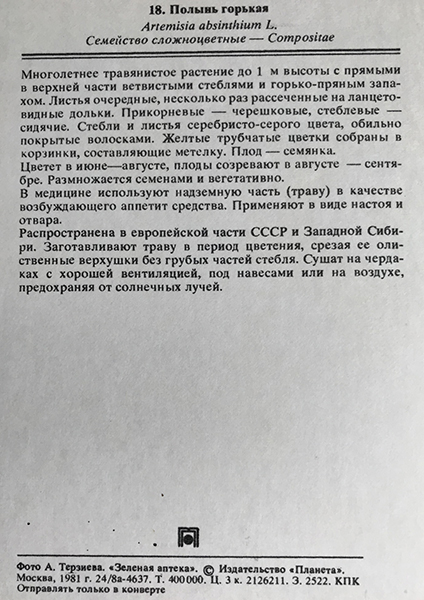
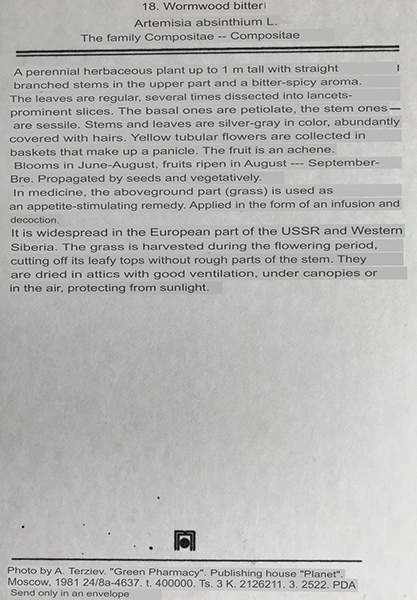
Google Translate is unable to translate text as image files but am most impressed with the software Yandex Translate which can translate impeccably and even retains how the original text was presented as shown above. A photo can be taken of the text and image file dropped into the web page software. There is also a mobile app version.

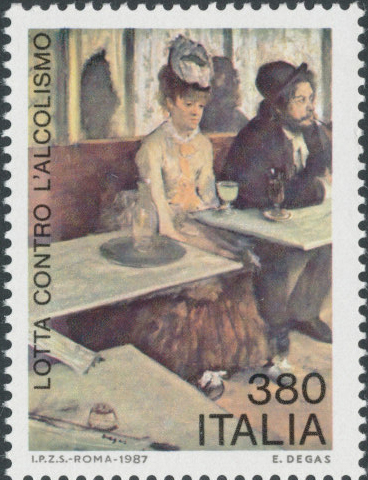
The social aspects of the use of absinthe have attracted a number of artists, including Degas, shown in the Italian stamp (1987) on the right. They both look a tad worse for wear! More recently the artist Paul Wright painted an interpretation shown left (1978, 6 x 4 inch, watercolour and gouache) where the claimed amorous effects of the drink seem to be taking effect albeit to an apparently disinterested lady! The painting's title is a derivation of the more famous phrase.
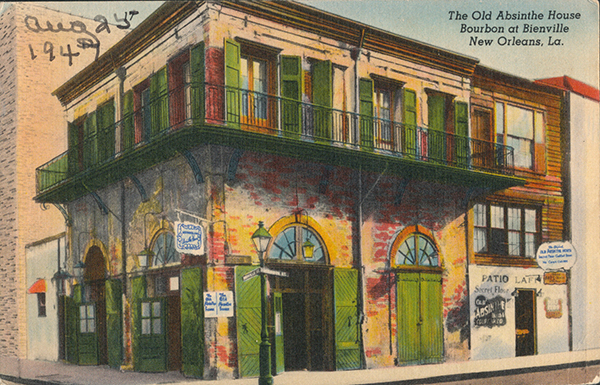
The Old Absinthe House in New Orleans. Postcard published by the Louisianan News Co. The drink became popular worldwide including the USA and the UK.
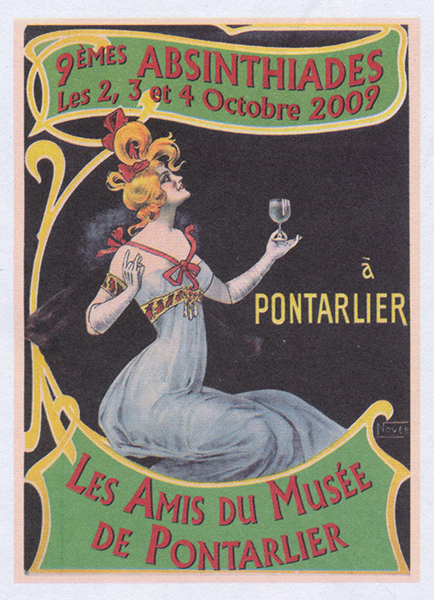
A cachet (illustration on an envelope) this on a preprinted French example. It celebrates the Absinthiades in Pontarlier, France. The link is to the Facebook group page which notes it is held annually and events include a competition held for distillers with a 'Golden Spoon' awarded to the winner. The ritual of drinking absinthe where it is diluted and often sweetened with sugar to make more palatable include often ornate absinthe spoons.
Comments to the author David Walker are welcomed.